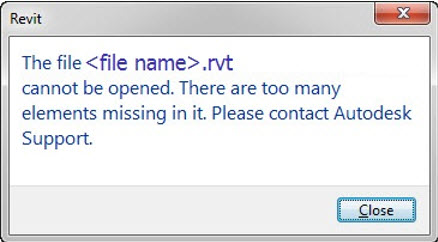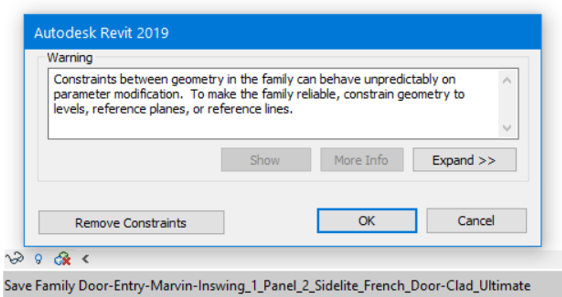As of April 30, 2025, we’re proud to announce our exciting new chapter. | Read more here.
Are you curious about the latest Autodesk features and how they can enhance your workflow? Wondering how Building Information Modeling (BIM) can drive efficiency and innovation in your projects?
At Microsol Resources, we make it easy for you to stay up to date with the latest advancements through our annual What’s New with Autodesk webinar series. These sessions dive deep into the newest features across Autodesk’s suite of tools—including AutoCAD, Revit, Autodesk Construction Cloud, Civil 3D, 3ds Max, and more—so you can maximize productivity, improve collaboration, and integrate cutting-edge BIM workflows seamlessly.
With every new release, Autodesk introduces powerful enhancements designed to optimize workflows, boost efficiency, and enhance project collaboration. Our webinars go beyond just listing new features—we focus on practical applications, expert insights, and real-world tips to help you get the most out of the latest software updates.
Missed a session? Explore our archive of What’s New with Autodesk webinar series and see how Autodesk has evolved over the years:
Microsol Resources will bring you the latest information on Autodesk products so be sure always to follow our website, blog, and social networks to stay up to date.
Stay ahead of the curve and see the demos of the new features with our building and infrastructure specialists.
Model corruption in Revit can happen. We noticed a common trend about what causes these issues and have compiled possible solutions to implement into your project or firm’s workflow, to reduce the risk of corruption and down-time. In another article we’ve discussed, What Causes Revit Data Corruption? In this article, we will focus on one of the worst instances of model corruption.
“The model {filename}.rvt is missing many elements, and cannot be opened.”
This error indicates corruption in Arch, Struct, or MEP Revit families, where the application does not allow anyone to open the project file. This can affect both projects using or not using Worksets and Worksharing. This message appears when there are more missing elements than Revit will ignore. If there are just a few missing elements, Revit ignores them and attempts to continue opening the model. If there are too many missing elements, the file is unrecoverable and the team will have to restore a previous version of the file or a local file.
There are instances where the Microsol Resources support team can open a case with Autodesk and have the file repaired. Sadly, this does not happen often.
However, sometimes the error only occurs when the ‘audit’ option is checked when opening the file. We will proceed with the understanding that we are able to open the model and that the error appears when ‘Audit’ is checked.
The following are two images of the error message we’ve seen.


Elements in your project are corrupt, causing Revit to report the missing elements. Here is our tutorial on troubleshooting.
The premise is that this error is caused by one or more corrupt family components. So the solution is to extract all families from an un-corrupted archive of the model (un-corrupted here means that one is able to open the model with an ‘Audit’ check) and load those families into the corrupted version of the model. This overwrites all family definitions including corrupted versions and thus rids the project of the error. Family extraction from a project can be automated by going to Save As > Library > Family. We need to find a stable family or repair the issues identified in this warning.
The image below was captured during this process, a warning pops up indicating the family is problematic in some way. I moved the warning error box to the lower left of the Revit interface, in order to see and capture the warning next to the status bar. This information and the right Revit journal file can help identify potential problems in the family being exported.
The warning dialog has an option to export the warning, the element ID, and the addressable issue.

However, the challenge with this approach is that large projects contain hundreds of families, and loading them manually becomes tedious. We can automate the process either by using a macro or a dynamo script. Reach out if this is something your team needs.
Once the corrupt family has been identified, one can re-open the model and locate the family in the Project Browser and delete the family (via right-click), or replace the family with an un-corrupted version from the library or archive.
The project should open without error after this (when ‘Audit’ is checked). If there is more than one corrupt family, this process will have to repeat as many times as needed since each run of the Family Size Reporter will crash when processing the first available corrupt family.
If the missing elements message is received for a Cloud Workshared model hosted on BIM 360, then the process would be the same (restore a previous version of the model and replace any family corruption). However, the corruption could be isolated to the locally cached copy of a model or link, particularly if the issue is limited to just one user. In this circumstance, the solution is far simpler:
To clear a corrupt/damaged cloud workshared model or outdated link from the system:
An alternate approach, if you have access to a second system:
If the method above does not work, then the more complete Alternate Sledgehammer Approach may help.
For all Revit projects, Microsol Resources and Autodesk, inc recommended regularly open and audit your Revit model (daily, or weekly) to ensure that any damage or corruption is addressed as soon as possible. It is also important to address warnings to reduce the overall risk of model corruption. Please see our other blog, Revit Project Maintenance Guidelines. Consider taking a class with us, perhaps Revit Family Creation, Online
If you are still having persistent issues, you can create a support case and our Technical Team will try and assist you.
The first step of any Revit Model Maintenance process is Detach from Central with Audit. However, there is more to cleaning a project than this. This article is a cumulation of thousands of tech support cases, solved and logged in our CRM system.
When a model is not maintained, it takes more system resources, performance is reduced, packets of information lost and corruption in the data is the result. I’ve organized them in the best order possible, but it takes a team to get it all done, while in production.
Here are our recommended procedures for a terrestrial and cloud project.
When a project in the cloud, in BIM 360, is seeing signs of possible corruption we should use the same maintenance procedures on these files as well. First, one would need to take it down, or copy the RVT to a local computer and preform these maintenance procedures. But we shouldn’t just copy and paste.
There are many instances of the model in the BIM 360 project. We have the version we open and edit while using Revit. We have the published version in BIM 360 Document Management, which is viewable when using the browser via docs.b360.autodesk.com. We even have copies of the file in various shared folders or even within coordination spaces.
Because it is sometimes difficult to determine what has been published most recently and what sets are included. It is our recommendation to open the RVT via Revit. Open your model, Sync with Central, and Relinquish all editable items. use the “Save As” function to save a copy of the file to your desktop or the local machine. Make sure you check the options in the File Save As dialog, choose “make this a central file after save”. Perform maintenance starting from step #3 above.
Let me know your thoughts on this process. You may have another tip I can add to this resource.

Features the latest informative and technical content provided by our industry experts for designers, engineers, and construction firms and facility owners.
LEARN MORESTAY IN TOUCH